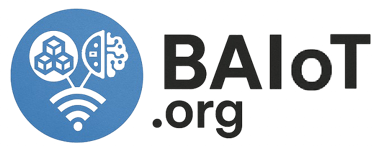Case Study Proposal: Smart Water Management for Urban Resilience
BAIoT.org proposes a smart water system using Blockchain, AI, and IoT to improve urban resilience, reduce waste, enhance transparency, and protect public health through predictive analytics, real-time monitoring, and ethical technology integration.
10/4/20255 min read


Case Study Proposal: Smart Water Management for Urban Resilience
Harnessing the Power of Blockchain, AI, and IoT
Presented by BAIoT.org
Executive Summary
Water is the lifeblood of cities — essential for public health, economic development, and environmental sustainability. Yet, urban water systems around the world are under increasing strain. Climate change, rapid urbanization, aging infrastructure, and fragmented data systems have created a perfect storm of challenges that threaten the reliability, safety, and equity of water access.
This case study proposal outlines a pilot initiative led by BAIoT.org, the world’s first nonprofit dedicated to the ethical convergence of Blockchain, Artificial Intelligence (AI), and the Internet of Things (IoT). The initiative aims to demonstrate how these technologies, when integrated responsibly, can transform urban water management into a resilient, transparent, and intelligent system — one that empowers communities, protects ecosystems, and adapts to the realities of a changing climate.
1. The Problem: Urban Water Under Pressure
Cities today face a complex web of water-related challenges:
Infrastructure decay: Many urban water systems rely on decades-old pipes and treatment facilities, leading to frequent leaks, contamination, and service disruptions.
Climate volatility: Droughts, floods, and unpredictable weather patterns are making water supply and drainage increasingly difficult to manage.
Population growth: Rising demand for water in densely populated areas strains existing infrastructure and complicates equitable distribution.
Data fragmentation: Water usage, quality, and infrastructure health are often tracked manually or stored in siloed systems, making real-time decision-making nearly impossible.
Lack of transparency: Citizens and regulators often lack access to reliable, up-to-date information about water quality, usage, and infrastructure performance.
These issues are particularly acute in fast-growing cities across Southeast Asia, Africa, and Latin America, where infrastructure investment often lags behind urban expansion.
2. The BAIoT.org Approach: A Smarter, Safer Water System
BAIoT.org proposes a pilot deployment of a Smart Water Management System in collaboration with a mid-sized city in Southeast Asia. The system will integrate Blockchain, AI, and IoT to create a secure, intelligent, and transparent water infrastructure that can adapt to local needs and global challenges.
2.1 IoT for Real-Time Monitoring
Smart sensors will be installed across pipelines, reservoirs, treatment plants, and drainage systems to monitor:
Flow rate and pressure
Water quality (e.g., pH, turbidity, contaminants)
Leak detection and pipe integrity
Flood levels and drainage capacity
Edge computing devices will process data locally to reduce latency and enable rapid response.
Low-power wide-area networks (LPWAN) will ensure reliable communication across urban environments, even in low-connectivity zones.
2.2 AI for Predictive Intelligence
Predictive maintenance algorithms will identify early signs of infrastructure failure, allowing for proactive repairs.
Demand forecasting models will analyze historical and real-time data to optimize water distribution and reduce waste.
Flood risk simulations will combine weather data, terrain mapping, and drainage capacity to inform emergency planning.
Water quality analytics will detect contamination patterns and recommend targeted interventions.
2.3 Blockchain for Trust and Transparency
Immutable data logs will record sensor data, maintenance activities, and service events on a decentralized ledger.
Smart contracts will automate service-level agreements between municipalities, contractors, and citizens — ensuring accountability and timely action.
Citizen dashboards will provide transparent access to water quality, usage statistics, and service updates.
Regulatory integration will enable secure sharing of verified data with environmental and public health agencies.
3. Anticipated Outcomes
The pilot aims to deliver tangible improvements across multiple dimensions:
3.1 Operational Efficiency
Significant reduction in water loss due to leaks and inefficiencies.
Faster response times to infrastructure failures and contamination events.
Optimized water distribution based on real-time demand and predictive analytics.
3.2 Public Health and Safety
Early detection of waterborne contaminants and infrastructure risks.
Improved flood preparedness and mitigation strategies.
Enhanced monitoring of water quality for vulnerable populations.
3.3 Transparency and Civic Trust
Verifiable data accessible to citizens, regulators, and stakeholders.
Increased public confidence in municipal water services.
Reduced corruption and mismanagement through automated, auditable systems.
3.4 Environmental Sustainability
More efficient water usage and reduced waste.
Lower energy consumption in treatment and distribution.
Better alignment with climate adaptation and sustainability goals.
4. Strategic Alignment with BAIoT.org’s Mission
This initiative reflects BAIoT.org’s core values and strategic goals:
Ethical innovation: Technology should serve people and the planet, not just profit.
Inclusive access: Solutions must be designed for underserved communities and scalable across diverse contexts.
Open collaboration: We believe in co-creating with local governments, researchers, and civil society.
Responsible governance: Data integrity, privacy, and transparency are non-negotiable.
Global impact: Our work aims to inspire and inform similar efforts worldwide.
5. Implementation Roadmap
Phase 1: Planning and Partnership
Identify a pilot city and secure municipal collaboration.
Conduct stakeholder workshops to define goals, challenges, and success metrics.
Map existing infrastructure and data systems.
Phase 2: Technology Deployment
Install IoT sensors and edge devices across key infrastructure points.
Develop AI models tailored to local conditions and historical data.
Set up blockchain infrastructure and smart contracts for data logging and service automation.
Phase 3: Testing and Optimization
Run simulations and stress tests to validate system performance.
Refine predictive models and alert mechanisms.
Train local teams on system operation, maintenance, and data interpretation.
Phase 4: Public Engagement
Launch citizen-facing dashboards and mobile apps.
Host community forums to gather feedback and build trust.
Publish open-source documentation and share learnings.
Phase 5: Evaluation and Scaling
Measure impact using key performance indicators (KPIs) such as water loss reduction, response time, and citizen satisfaction.
Document lessons learned and best practices.
Explore replication in other cities and regions.
6. Risk Assessment and Mitigation
Technical Risks
Sensor failure or data loss: Mitigated through redundancy, edge processing, and regular maintenance.
AI model bias or inaccuracy: Addressed through diverse training datasets and continuous validation.
Governance Risks
Data privacy concerns: Mitigated through encryption, anonymization, and user consent protocols.
Resistance to transparency: Managed through stakeholder engagement and policy alignment.
Operational Risks
Infrastructure compatibility: Assessed during planning and addressed through modular system design.
Maintenance challenges: Mitigated through local capacity building and training programs.
7. Broader Impact and Replicability
This pilot is designed to be replicable across diverse urban contexts. By leveraging open-source tools, modular architecture, and inclusive governance models, BAIoT.org aims to create a blueprint for ethical smart water systems worldwide.
Potential replication areas include:
Coastal cities vulnerable to flooding
Arid regions facing water scarcity
Rapidly urbanizing areas with aging infrastructure
The initiative also serves as a model for how emerging technologies can be applied to other critical urban systems — such as energy, waste, and transportation — in ways that prioritize ethics, equity, and sustainability.
8. Call to Action
Water is not just a resource — it’s a right. And managing it wisely is one of the defining challenges of our time. Through the convergence of Blockchain, AI, and IoT, we have the tools to build smarter, safer, and more sustainable cities.
BAIoT.org invites partners from across sectors to join this transformative initiative. Whether you're a technologist, policymaker, researcher, or community leader, your expertise and support can help shape the future of urban resilience.
Ways to Get Involved
Partner with us on pilot deployment, research, and policy development.
Contribute to open-source development of AI models and blockchain protocols.
Sponsor workshops and fellowships for local capacity building.
Join our global community to share insights, co-create solutions, and advocate for ethical tech.
Visit BAIoT.org to learn more, explore resources, and become part of the movement for responsible technology convergence.
Conclusion
This case study proposal is more than a technical blueprint — it’s a vision for a future where cities are resilient, communities are empowered, and technology serves the common good. By integrating Blockchain, AI, and IoT into urban water systems, we can address some of the most pressing challenges of our time with intelligence, transparency, and care.
BAIoT.org is committed to leading this change — and we invite you to be part of it.
Advocate
Pioneering the convergence of blockchain, AI, and IoT.
Connect
Support
Copyright © 2025 BAIoT.org. All rights reserved.
